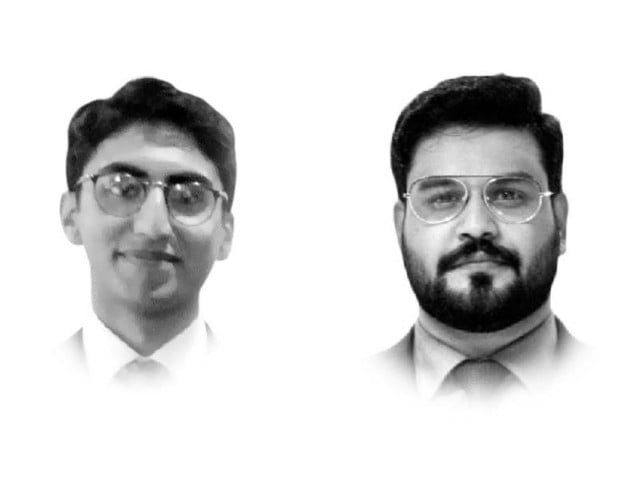Age of charlatans
Many researches of this nature have been undertaken even by well-known research institutes

Who needs facts when you have charisma? Who needs years of education and professional training when you can simply claim to be an ‘expert’? A few years ago, a man claiming to be a ‘spiritual cardiologist’ addressed a packed auditorium to talk about djinns and Black Magic in a renowned university campus. He went on to become a popular social media celebrity with over half a million followers. Such people are true manifestation of the new age of charlatanism, where anyone can claim to be an expert without any evidence or credentials. In the good old days, con artists had to move from town to town in order to sell their tricks. Nowadays, all it takes is the right kind of social network and a talent for spouting nonsense to become a modern-day charlatan. They can be found sitting in talk shows and Twitter spaces making colossal claims on subjects that they hardly know anything about.
These charlatans can be easily observed at work if one simply takes a look at some of the recent academic and social discourses in Pakistan. Modern charlatans in Pakistan mainly employ two tools: data manipulation and obscure jargons, to not only sell their bogus ideas but also to avoid public scrutiny. As a result, they end up influencing public opinion and even policy decisions, often with disastrous consequences. Over the years, many phoney and regurgitated ideas have been sold in Pakistan as actual academic and scientific research, from water powered cars to harnessing Jinn energy. Nowadays, data and technology have become the new catchphrases of the charlatans who sell shallow researches with misleading results. Anything with the phrase ‘data-driven’ is being packaged as genuine research in Pakistan, which could easily be debunked through a simple scrutiny as they are not based in any empirical or theoretical foundations.
Many researches of this nature have been undertaken even by well-known research institutes. In August 2021, one such study was conducted by a renowned institute on the disinformation and propaganda campaigns against Pakistan and Afghan peace process. Not only the study with such a broad premise relied solely on scrapped Twitter data, it also made no mention of any tools or techniques used for data collection, processing and analysis. Moreover, the study also presented many fancy graphs and figures as conclusions without providing their baseline data. The study also initially identified 45 hashtags along with their timelines as “state run disinformation campaigns by India and Afghanistan”. However, it later provided activity details for only 10 of these hashtags and conveniently ignored the other 35. A cursory browsing of the institute’s other studies also reveals similar patterns. Sadly, such studies are regularly quoted by many social media ‘influencers’ and even state officials at times.
Another instance of charlatanism and data manipulation is the extensively unscrutinised use of figures on Pakistan’s maritime economic potential. In September 2022, a grand launching ceremony for a study on potential of blue economy was held in Islamabad. The study was sponsored by a major public bank of Pakistan. However, the figures and data presented in the report were baseless and inconsistent, to say the least. For example, it stated that blue economy of Pakistan contributes around $1 billion to the country’s GDP without providing any sectoral breakdown. It also stated that maritime revenue of Pakistan stands at $183 million, however, this figure was given by World Bank report (2016) as the revenue of fisheries rather than maritime revenue and there is a huge difference between the two.
Another claim made in the report was that the country earns $300 million from maritime tourism alone, which is a huge claim for a country where there are hardly any tourism facilities, even in the largest metropolitan coastal city of Karachi. Ironically, these very claims and figures on blue economy have been circulating in the academic and research community for the past few years now. However, all of these claims and figures can be traced back to an op-ed published in July 2020, which also did not share any sources of the data presented or methods used to calculate these figures and claims. Unfortunately, most of the literature on maritime sector being produced in Islamabad has cited these dubious figures, with the National Institute of Maritime Affairs (NIMA) being the only notable exception. Moreover, the discourse on maritime and blue economy in Pakistan also often refers to obscure jargons, such as ‘Gross Marine Product’, which have no academic or scholarly definitions and lack any clear calculation formula. The only purpose of such jargons is to lend an air of authenticity and avoid any close scrutiny.
The overarching implications of charlatanism permeate deep in the state and society. Manipulation of data and over-emphasis on obscure jargons may apparently seem harmless. Yet, normalisation of inaccurate data at state-level may lead to overestimation or underestimation of certain sectors and misallocation of national resources. Many a time, charlatans also become direct beneficiaries of state and even reach high offices. Manipulation and misuse of information at such positions can end up damaging reputation of institutions or the country. It is therefore essential to recognise charlatans in our public life and close the avenues from which they gain prominence and mislead the public.















COMMENTS
Comments are moderated and generally will be posted if they are on-topic and not abusive.
For more information, please see our Comments FAQ